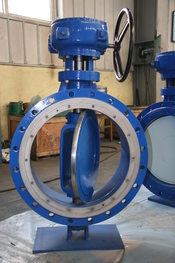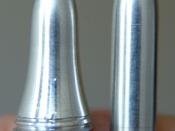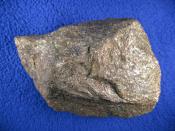Ferrous and Non-Ferrous Alloy Summary An alloy that contains carbon is a ferrous alloy. The carbon content for low carbon steels ranges from 0 - .25 weight percent. Steels that contain a low weight percent are softer and more ductile than most steels. Medium carbon steels contain .25 - .60 weight percent carbon. These are usually heat-treated and often contain small amounts of other alloying metals to increase strength. These alloys are stronger than low carbon steels, however, they have a lower ductility and toughness. High carbon steels have a weight percent between .60 and 1.4 weight percent carbon. These steels are extremely strong, but have very little ductility.
Alloys that consist of at least 11 weight percent chromium are called stainless steels. Stainless steels have a high resistance to corrosion. The three types of stainless steels are martesitic, ferritic and austenitic.
Cast iron is an alloy that consists of 1.4
to 6.7 weight percent carbon. Graphite is formed if the alloy contains more than 6.7 weight percent carbon. Cast irons tend to be extremely brittle due to the high weight percent. Cast iron does not react well to cold rolling and breaks under tension. Grey irons consist of 2.5-4.0 wt % carbon and 1-3 wt % silicon. The silicon makes the material more wear resistant, brittle and weak. A ductile iron is created when a small amount of magnesium is added. Ductile iron is used to make casting which is stronger and more ductile then those made from gray iron. White iron has a high wt % of silicon, and is extremely wear resistant.
Nonferrous alloys are also commonly used in industry. Copper is one of the more popular nonferrous alloys. Brass consists of copper and zinc. There are several types of brasses, which are generally weak when FCC,


